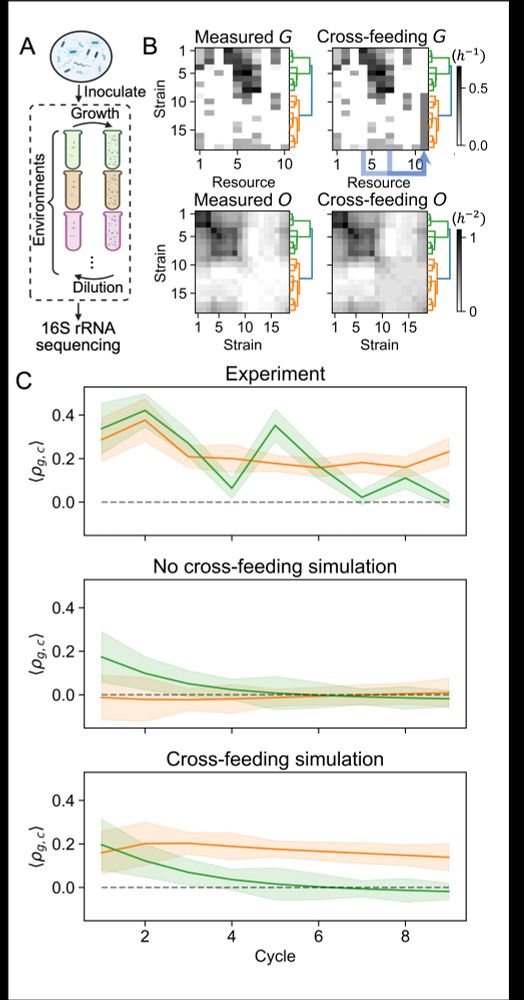
Figure showing experimental data.
This result holds in batch culture experiments (in the absence of cross-feeding), with intra-guild cohesion decreasing over time following an environmental perturbation.
For more detail, including analytics, eigenvectors, and more on cross-feeding, check out the manuscript!
16.09.2025 14:33 — 👍 0 🔁 0 💬 0 📌 0
The answer depends on fluctuation rate:
For fast fluctuations, environment dominates abundance dynamics, and guild members rise and fall in abundance together – a cohesive, correlated response.
For slow fluctuations, competition dominates, and changes in abundance become anti-correlated.
16.09.2025 14:33 — 👍 1 🔁 0 💬 1 📌 0
Descriptions of communities at the guild level reduces complexity and is a promising route to increase understanding and predictive power. This will require an understanding of microbial guild properties, however. Here, we ask a simple question: how do guilds respond to changes in environment?
16.09.2025 14:33 — 👍 0 🔁 0 💬 1 📌 0

Cartoon illustrating the guild concept.
Microbial communities are often highly complex at the species level, making their responses to environmental change difficult to predict. The conservation of metabolic traits across species, however, has given rise to the concept of “functional guilds,” groups of metabolically similar organisms.
16.09.2025 14:33 — 👍 0 🔁 0 💬 1 📌 0

Figure showing change in guild cohesion as environmental fluctuation rate changes.
We use simulation and theory to predict microbial guild response to environmental fluctuations and test these predictions experimentally. We find a shift in response depending on fluctuation rate: fast fluctuations excite cohesive intra-guild response, but cohesion disappears as fluctuations slow.
16.09.2025 14:33 — 👍 0 🔁 0 💬 1 📌 0




